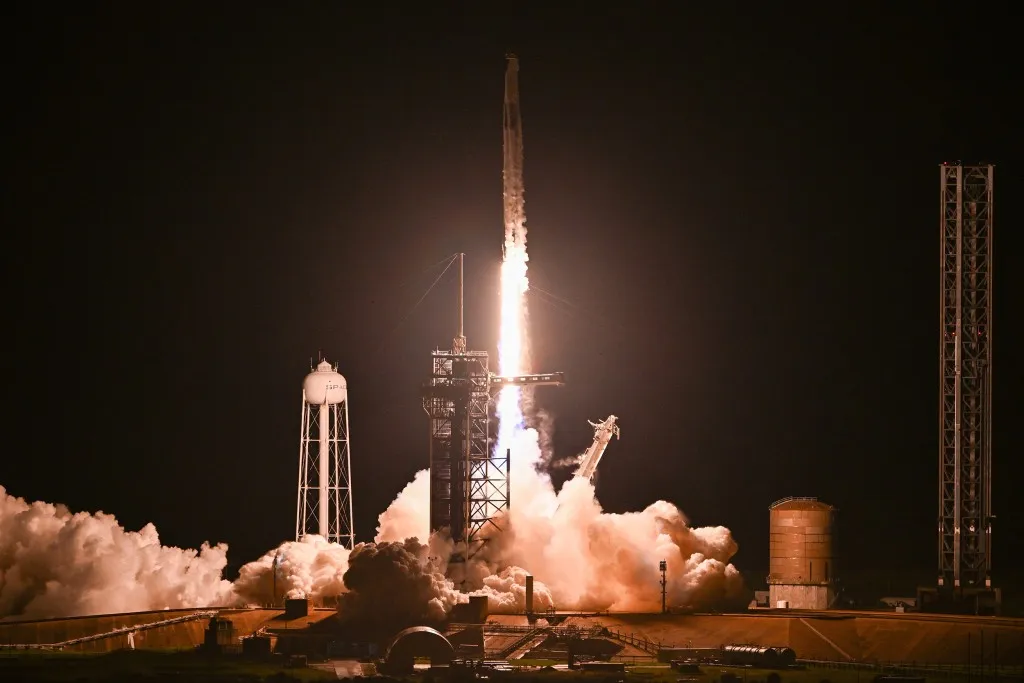SpaceX Conducts Groundbreaking Private Mission Featuring First All-Civilian Spacewalk

Overview of SpaceX's Polaris Dawn Mission
A SpaceX capsule carrying four private citizens blasted off early Tuesday on a five-day mission that is set to include the first spacewalk carried out by an all-civilian crew. The mission, known as Polaris Dawn, lifted off at 5:24 a.m. ET from Launch Complex 39A at NASA’s Kennedy Space Center in Florida. The journey aims to take the four crew members to the highest orbital altitude since Apollo moon missions in 1972: 870 miles above Earth.
Goals and Plans During the Mission
While in space, the group will test new spacesuits and technologies that could pave the way for future long-duration missions to the Moon and Mars. The crew consists of billionaire entrepreneur Jared Isaacman, retired Air Force Lt. Col. Scott “Kidd” Poteet, and SpaceX engineers Sarah Gillis and Anna Menon.
Significance of the Spacewalk
The spacewalk is scheduled for 2:23 a.m. ET Thursday, with a backup opportunity on Friday if needed. Isaacman and Gillis will exit the Crew Dragon spacecraft on a tether, exposing the entire capsule to vacuum conditions. This expedition aims to make history, marking the first time non-government astronauts conduct a spacewalk.
Scientific Implications
During the mission, the capsule's orbit will allow it to pass through the Van Allen radiation belt, enabling scientists to study the effects of space radiation on the astronauts. These findings could be crucial in planning future missions beyond low Earth orbit, such as those to the Moon and Mars.
Final Thoughts from the Crew
The Polaris Dawn crew expressed their commitment to explore space not just for adventure but to make life better on Earth. The launch was initially planned for late August but faced delays due to a helium leak and poor weather conditions.
This article was prepared using information from open sources in accordance with the principles of Ethical Policy. The editorial team is not responsible for absolute accuracy, as it relies on data from the sources referenced.